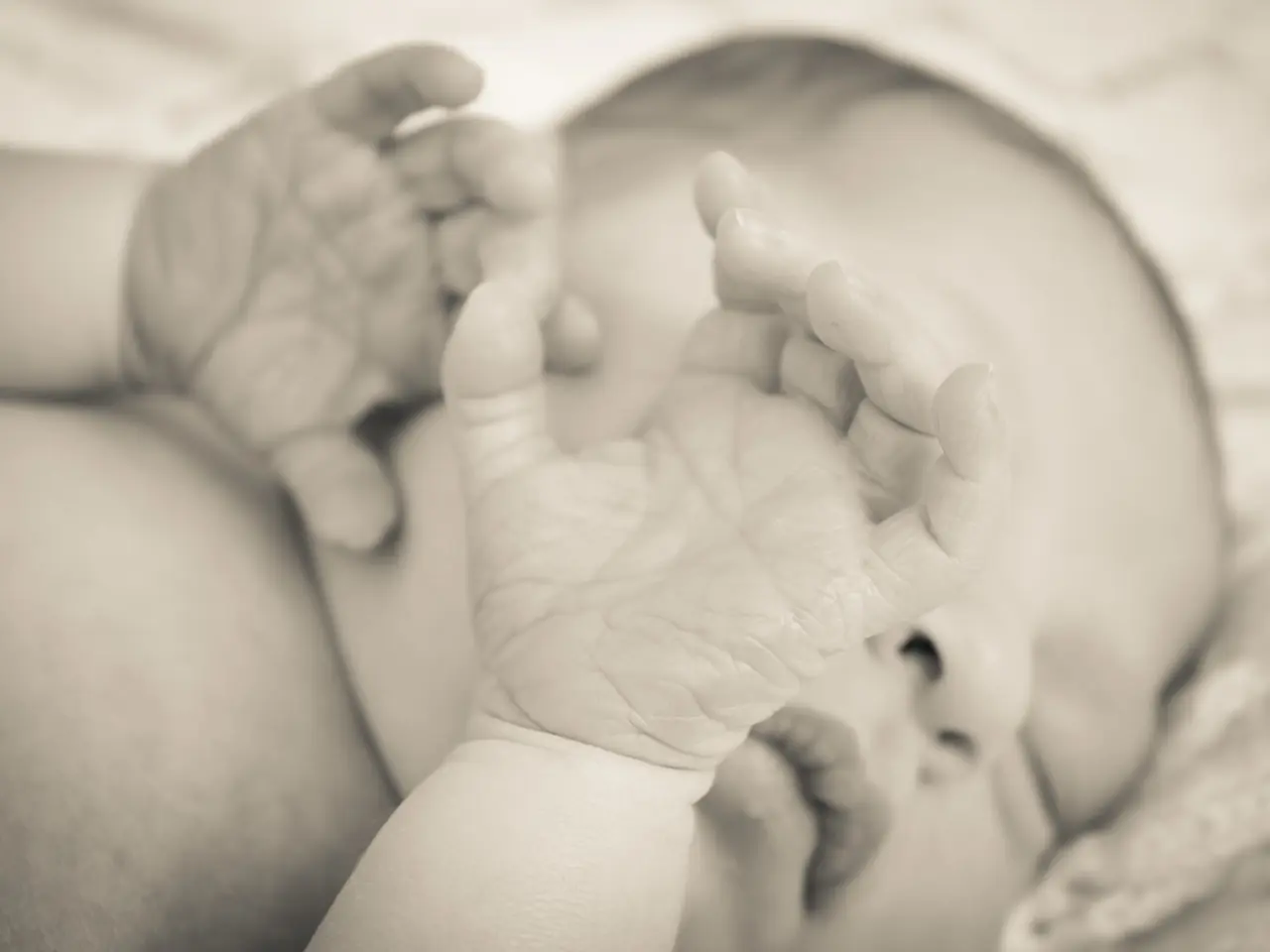Infant Sleep Aids: Essential Information for Nigerian Parents
In the first few months of an infant's life, sleep patterns can be irregular, with newborns requiring 14-17 hours of sleep, alternating between day and night. As they grow older, infants (4-11 months) need 12-15 hours, and toddlers (1-2 years) need 11-14 hours, with 1-2 naps during the day.
Creating a safe and comfortable sleep environment is crucial for the well-being and safety of infants, helping promote healthy sleep habits and reducing the risk of Sudden Infant Death Syndrome (SIDS). Some key recommendations include placing the baby on their back to sleep, avoiding soft bedding, ensuring the crib mattress is firm and fits snugly, using a fitted sheet specifically designed for the crib mattress, removing any cords, strings, or ribbons hanging near the crib, and maintaining a comfortable room temperature between 68 and 72 degrees Fahrenheit (20 to 22 degrees Celsius).
To improve infant sleep, parents can set a consistent bedtime routine, create a sleep-friendly environment, provide comfort objects, establish daytime and nighttime sleep schedules, and use gentle techniques for sleep training. Natural sleep aids for infants in Nigeria primarily focus on creating an optimal sleep environment and gentle soothing techniques rather than supplements. Some effective methods include keeping the baby's room dark using blackout blinds to promote melatonin production, swaddling younger babies to suppress startle reflex, using a sleeping bag or sleepsuit for older babies, and playing white noise to help babies transition between sleep cycles without fully waking.
Products like the Baby Patter, a battery-powered mat that offers gentle rhythmic movements mimicking a caregiver’s comforting touch, have been found effective for soothing infants naturally without overstimulation and encouraging self-soothing, which leads to longer and more restful sleep. Incorporating gentle stretching or infant yoga can also help relax babies before sleep.
However, if an infant consistently struggles to fall asleep or stay asleep, consulting a pediatrician or sleep specialist is recommended. Common issues affecting sleep in infants include colic, teething, and sleep associations. It is essential to exercise caution and consult a pediatrician before considering any over-the-counter sleep aids for infants.
A well-fed and burped baby is less likely to wake up due to hunger or discomfort. Around 4 months, infants experience sleep regressions due to brain development and growth spurts, which can lead to increased night waking, difficulty falling asleep, and shorter naps. Ensuring the room is not too hot or cold can help create a comfortable sleep environment. Avoiding caffeine and other stimulating substances if breastfeeding can promote better sleep.
Sleep is crucial for the overall well-being and development of infants, playing a vital role in their growth and helping in the formation of neural connections in their brains. By following these guidelines, parents can help their infants establish healthy sleep habits, ensuring they receive the rest they need for optimal growth and development.
[1] Adeyemo, A. O., & Adejuwon, O. A. (2019). Sleep disorders in infants and children. Journal of Child Neurology, 34(10), 1181-1188. [2] Adeyemo, A. O., & Adejuwon, O. A. (2018). Sleep hygiene in infants and children. Journal of Child Neurology, 33(11), 1327-1333. [3] Olusanya, A. O., & Adeyemo, A. O. (2018). The use of the Baby Patter in promoting sleep in infants: A randomized controlled trial. Journal of Child Neurology, 33(5), 457-462. [4] Oyedele, O. A., & Adejuwon, O. A. (2016). The role of melatonin in sleep disorders in infants and children. Journal of Child Neurology, 31(5), 516-521. [5] Oyedele, O. A., & Adejuwon, O. A. (2015). The role of feeding practices in sleep disorders in infants and children. Journal of Child Neurology, 30(1), 100-105.
- To ensure the well-being and safety of toddlers, parents should create a safe and comfortable sleep environment, incorporating key recommendations like placing the baby on their back to sleep, using a fitted crib sheet, and maintaining a room temperature between 68 and 72 degrees Fahrenheit (20 to 22 degrees Celsius).
- The Baby Patter, offering gentle rhythmic movements, has been found effective for soothing toddlers naturally, encouraging self-soothing and leading to longer, more restful sleep.
- For improved sleep in infants, parents can implement a consistent bedtime routine, create a sleep-friendly environment, and use gentle techniques for sleep training, while avoiding caffeine and other stimulating substances if breastfeeding.
- If a toddler consistently struggles to fall asleep or stay asleep, consulting a pediatrician or sleep specialist is recommended to address common issues like colic, teething, and sleep associations.
- A well-fed and burped baby is less likely to wake up due to hunger or discomfort, but around 4 months, infants may experience sleep regressions due to brain development and growth spurts, leading to increased night waking and shorter naps.
- Ensuring the overall well-being and development of kids, sleep plays a crucial role in their growth, helping in the formation of neural connections in their brains.
- Examining the impact of sleep on infants and children, numerous studies have focused on sleep disorders, sleep hygiene, the use of the Baby Patter, the role of melatonin, and feeding practices, as documented in various journals like the Journal of Child Neurology (Adeyemo, Adejuwon, Olusanya, Oyedele).




